Make your AI Chatbot Proactive to Boost Visitor Engagement
YourGPT chatbot doesn’t just wait to be clicked — it can actively engage visitors at the right moments. By using proactive triggers, your chatbot can automatically start conversations, send messages, or open the chat window based on how users interact with your website.
In this guide, we’ll show you how to set up proactive triggers and actions that help boost engagement, reduce bounce, and guide visitors toward meaningful actions.
Why Make Your Chatbot Proactive?
Most visitors don’t initiate chat unless prompted. With proactive engagement, YourGPT chatbot can:
Greet first-time visitors on high-value pages
Offer help when a user clicks a specific element
Re-engage users who switch away from your website window
These actions can be set up using Triggers.
What Are Triggers?
Triggers are predefined events tied to visitor behavior. They help your chatbot act when a user:
Visits a specific page
Clicks on a certain element
Switches away from your website tab (simulating exit intent)
⚠️ Note: The “Leave website” trigger is activated when a visitor switches browser tabs or windows — not when they close the site or browser.
When triggered, your chatbot can:
Send custom messages
Open the chatbot widget
Play a sound for added visibility
How to Set Up Triggers in YourGPT
Follow these steps to configure proactive behavior in your chatbot:
1. Go to Trigger Settings
From your chatbot dashboard, open Widget Settings in the sidebar.
Select the Triggers option.
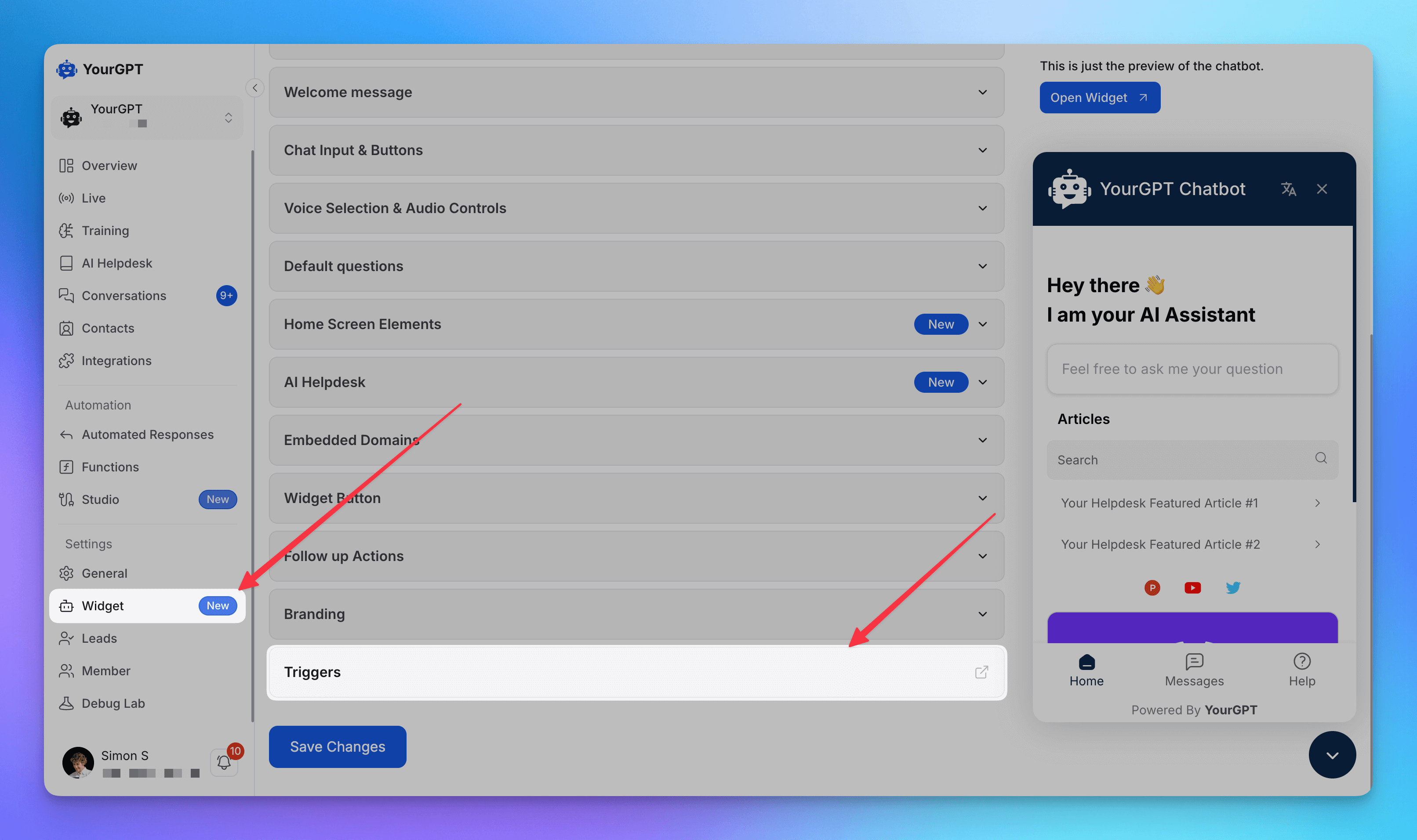
2. Create a New Trigger
Click Add Trigger.
Enter a clear name for the trigger.
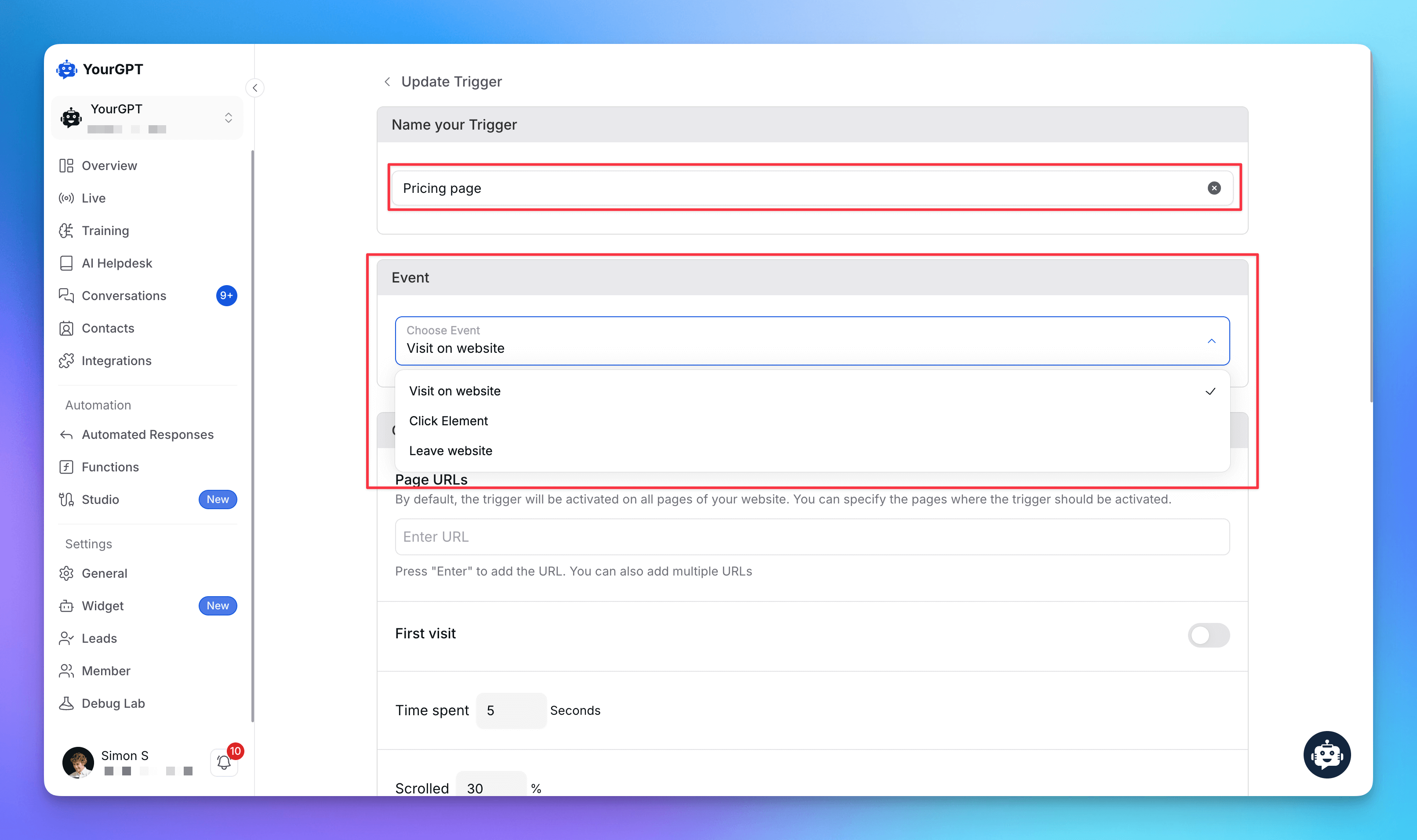
3. Choose the Event Type
Visit on website – Triggers when a user visits specific pages.
Click Element – Triggers when a user clicks a button or link.
Leave website – Triggers when the user switches away from your site window/tab.
4. Add Conditions
You can fine-tune when the trigger activates:
URL contains
/pricingFirst-time vs. returning visitor
Time spent on page
Scroll depth percentage
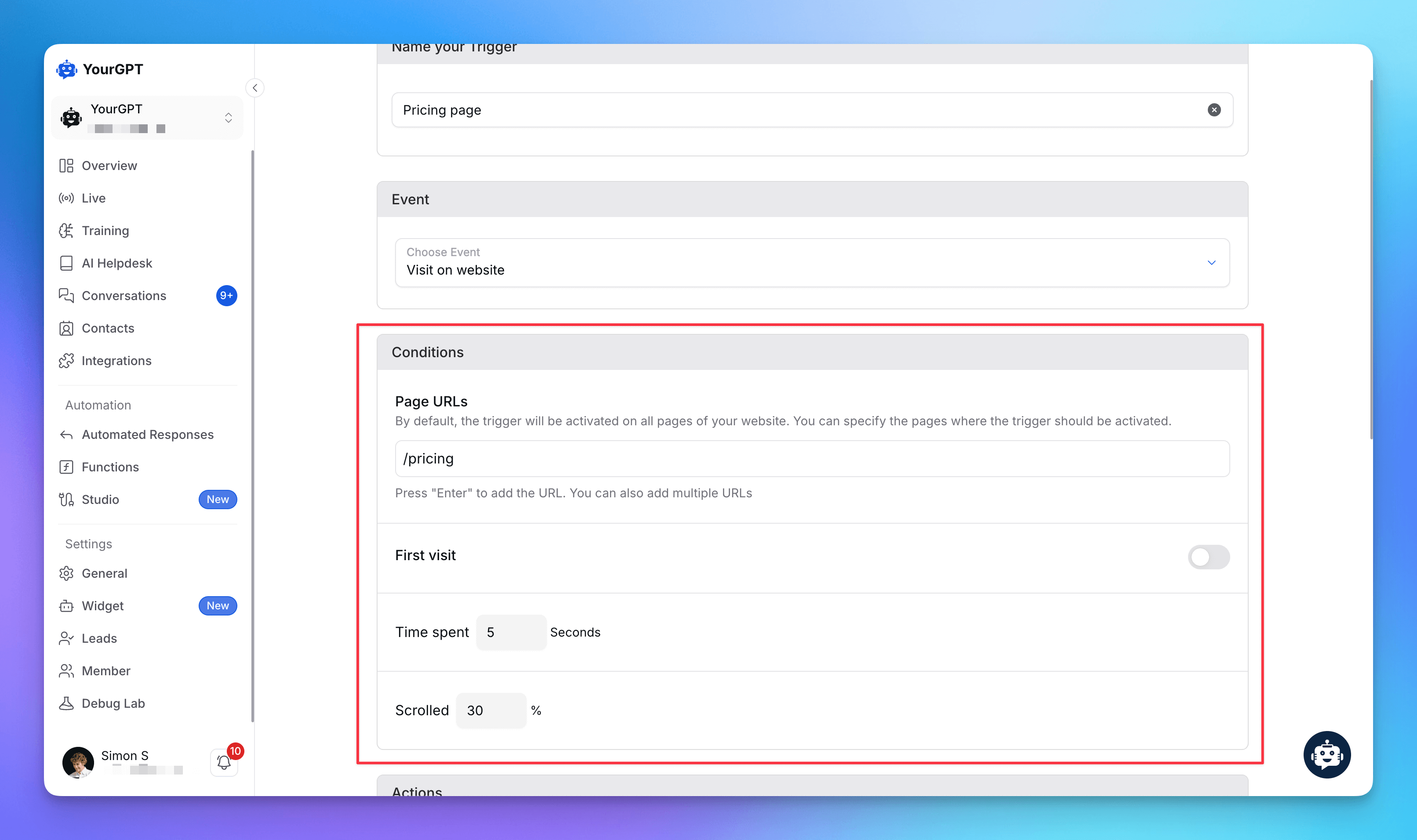
5. Set the Actions
You can choose one or more actions:
Send a message / Add Quick questions: Add helpful, inviting, or persuasive action text (e.g., “Need help choosing a plan?”)
Open chatbot: Forces the chat window to open
Play sound: Draws attention with an alert tone
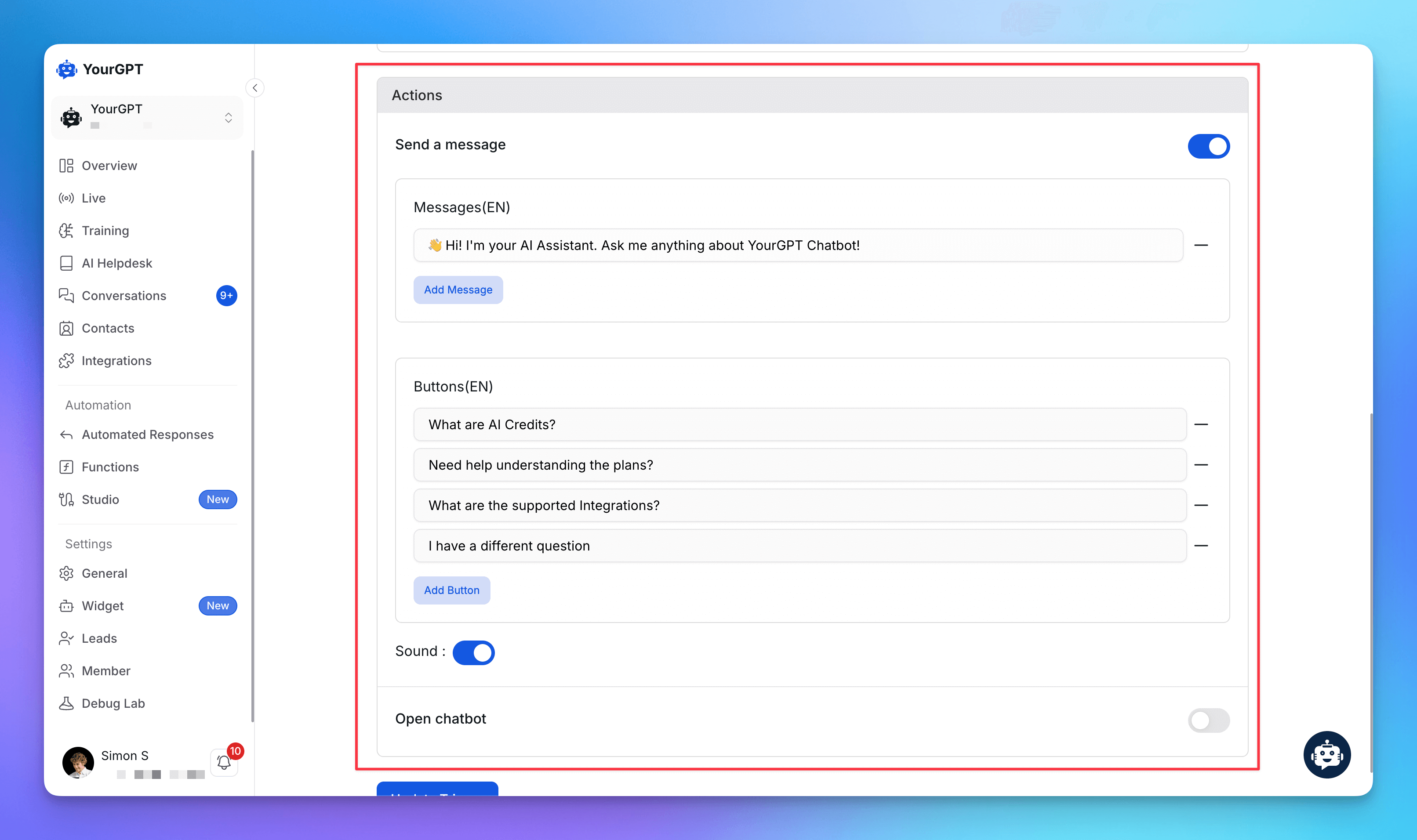
6. Save and Test
Once configured:
Click Create Trigger
Visit your website and test if the trigger behaves as expected
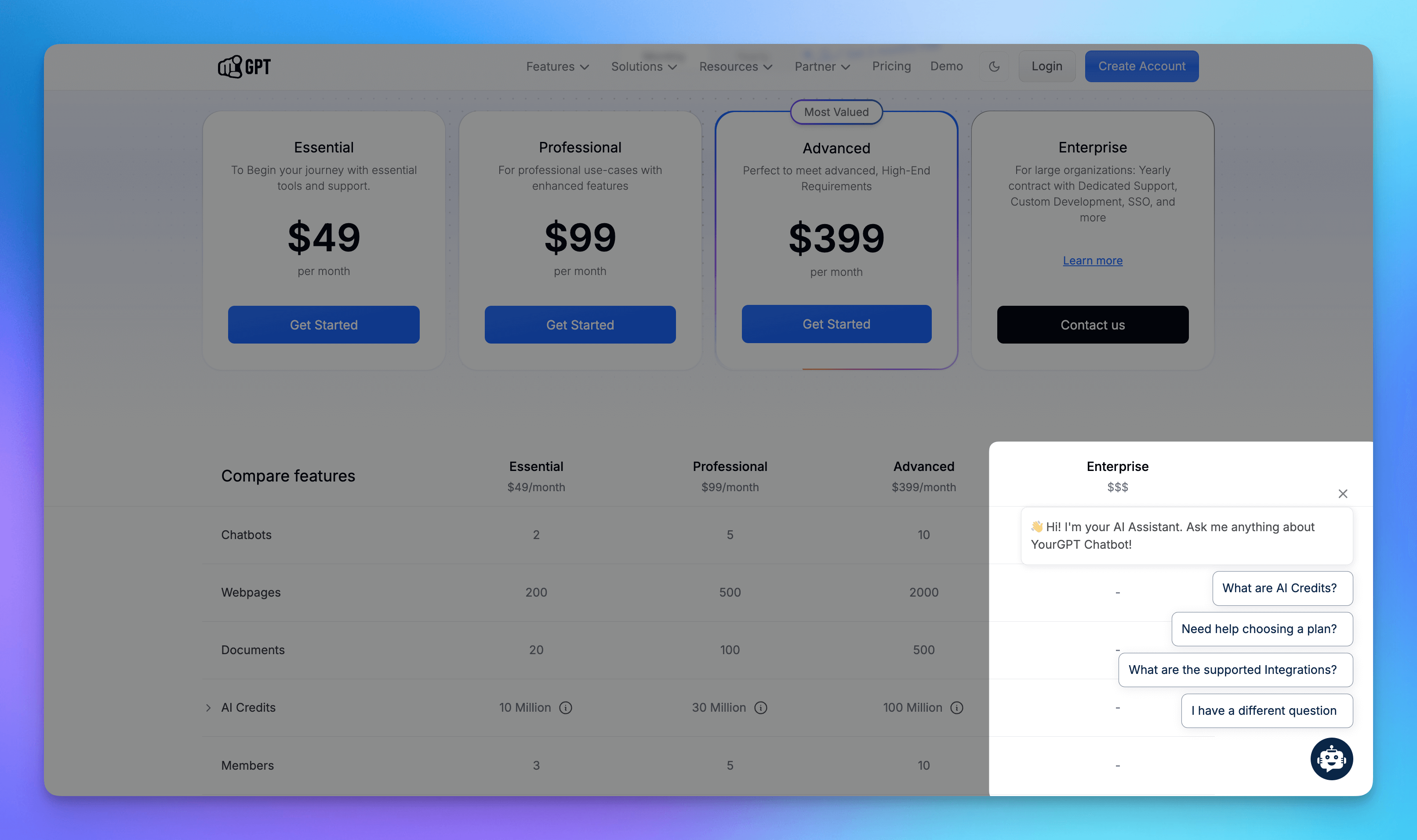
Example: Trigger for the Pricing Page
Let’s say you want to proactively engage users on the pricing page:
Event: Visit on website
Condition: URL contains
pricingAction: Default Buttons “Need help understanding the plans?” + open chatbot
This can prompt undecided users to chat before bouncing.
Bonus Tip: Enhance with Widget Styling
Beyond triggers, you can improve engagement by customizing your widget:
Add default questions (e.g., “Need help?”, “Compare plans”)
Use cards for a richer experience
Final Thoughts
Using proactive chatbot triggers in YourGPT helps your bot act more like a smart assistant — one that anticipates the user's needs and offers timely help. Whether it’s nudging on the pricing page or reconnecting when users switch tabs, these actions can lead to better conversations and more conversions.
